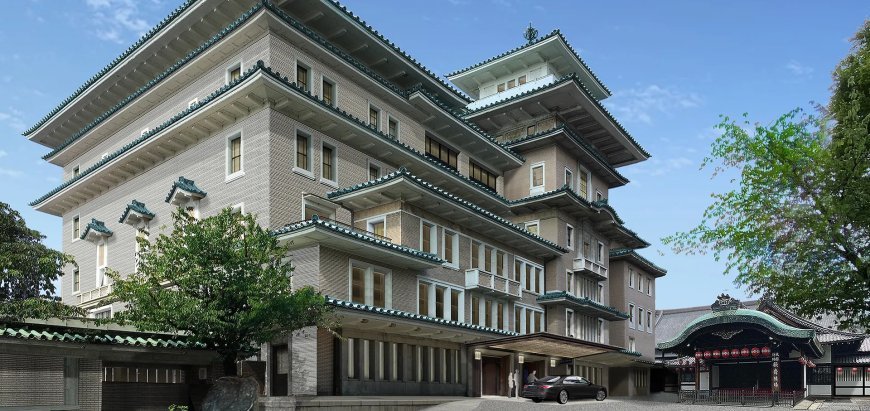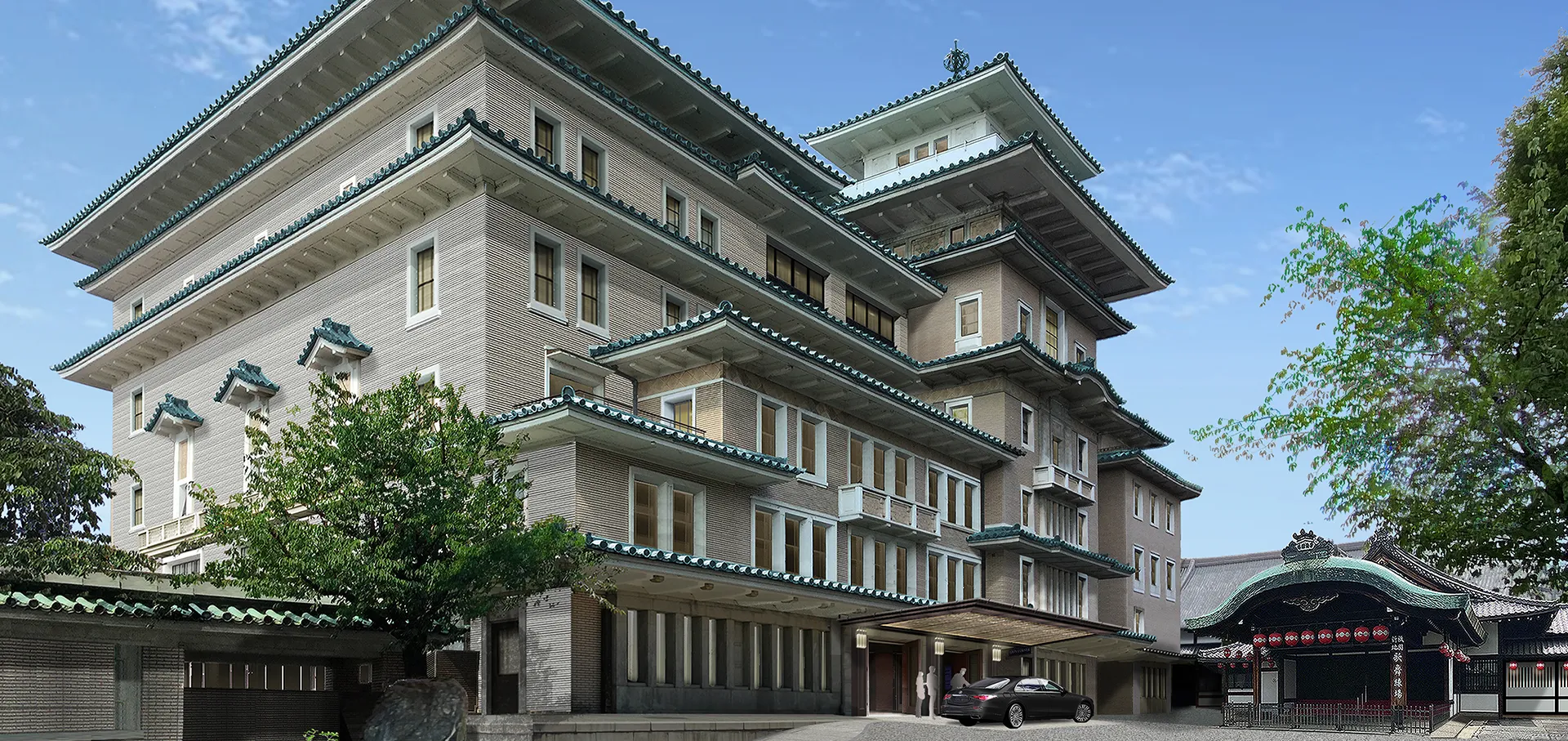The Imperial Hotel, Kyoto reveals guestroom concepts rooted in tradition

The post The Imperial Hotel, Kyoto reveals guestroom concepts rooted in tradition appeared first on TD (Travel Daily Media) Travel Daily Media.

Slated to open in Spring 2026, The Imperial Hotel, Kyoto presents the exquisite aesthetic of its guestrooms, showing a design concept that melds traditional sensibilities with contemporary comfort.
The property will regale guests with three architecturally distinct accommodation styles: Extension, Preservation, and Renovation.
These spatial concepts reflect the historical evolution of the Yasaka Kaikan and are brought to life by two architectural partners: Obayashi Corporation, leading exterior restoration, and architect Tomoyuki Sakakida of New Material Research Laboratory which is responsible for the project’s interiors.
Located in Kyoto’s historic Gion district, the new boutique hotel is housed in the restored Yasaka Kaikan, a nationally registered tangible cultural property originally constructed in 1936, and will commence with reservations beginning autumn of this year.

The art of considerate restoration
The restoration of the Yasaka Kaikan in Kyoto is a remarkable story of architectural continuity and cultural preservation, led by Obayashi Corporation, the same company that built the original structure nearly 90 years ago.
Led by Masahiro Inoue, executive manager of the Architectural Design Department at Obayashi Corporation, the team worked to preserve and adapt the building while reinforcing its structure using modern methods.
Inoue said of the process: “Some parts retain their 88-year-old look, while others use 88-year-old preserved materials. The building significantly weaves together an aesthetic sense and preserved memories. That was our top priority.”
The exterior renovation included salvaging approximately ten percent of the original decorative tiles and reproducing fragile terracotta ornamentation using 3D scanning for accurate surveying to restore the original, enabling the hotel to maintain continuity with its cultural roots.

What was old is now new again
Meanwhile, the creative direction taken for Sakakida’s interiors embraces the ethos of “Old is New.”
This philosophy reinterprets Japan’s architectural past through a contemporary lens while honoring Kyoto’s climate, materials, and traditional sensibility.
According to Sakakida: “Kyoto cherishes old things but also embraces new culture. That contrast is the soul of this project. Since the Industrial Revolution, artistic and cultural shifts such as the Arts and Crafts movement in the UK and the Mingei folk craft movement in Japan have marked a return to hand craftsmanship.”
Sakakida added that, more than a century after the advent of modernism, there seems to be a certain sense of stagnation in the air, and a renewed appreciation for the old is taking hold.
Interiors throughout the hotel incorporate exceptional domestic materials including Japanese marble, Ōya stone, and Tamina-ishi, selected to align with the abundance of Japan’s nature and the tactile culture of its architecture.

Three distinctive narratives
Each of the 55 guestrooms is thoughtfully shaped by its structure’s history and spatial orientation, offering guests not just accommodation, but a layered experience of Kyoto’s past and present.
The design of each area evokes a distinct emotional atmosphere:
Extension Area
Located in the newly constructed north wing, guestrooms in the Extension area were designed to harmonize visually with the district’s iconic machiya wooden townhouses. The architecture respects Gion’s strict 12-metre height regulations, allowing the new construction to blend seamlessly into the surrounding townscape. Inside, these rooms are modern reinterpretations of Japanese tradition and grounded in a serene aesthetic. The use of 100 percent natural Japanese tatami-mat flooring, a first for the Imperial Hotel brand, creates a tactile connection to Japan’s domestic traditions. Minimalist furnishings and handcrafted textures in earth tones invite guests into a space of peaceful refinement. The quiet elegance here is deeply tied to Japanese ideas of wabi-sabi: understated beauty and impermanence.
Preservation Area
These guestrooms are situated along Hanamikoji Street and face the Gion Kobu Kaburenjo theater, placing guests at the physical and cultural center of Gion. The rooms retain original beams, pillars, and window frames of the Yasaka Kaikan, features gently restored to show their age and patina, not conceal it. In several rooms, private balconies open onto the Gion Kobu Kaburenjo grounds, often hearing the melodies of shamisen and kouta, creating an atmosphere of cinematic intimacy. These spaces are immersive by nature to evoke the sensation of stepping into a story that began nearly a century ago among guests.
Renovation Area
These rooms retain the silhouette and massing of the original Yasaka Kaikan while embracing minimalist spatial planning with contemporary interiors. Wide windows open onto scenes that shift throughout the day from soft morning mist along the Higashiyama ridgeline to the golden hour glow on ochre walls and tiled rooftops. Neutral color palettes are punctuated by tactile materials: Yakusugi wall boards shaped like a folding screen, brushed metal accents, and locally fired ceramics. These rooms are where the past meets the present in a rhythm that feels distinctly Kyoto.

A suite that embodies the spirit of a heritage city
Positioned in the Renovation area, the Imperial Suite is the hotel’s most refined expression of its architectural and cultural vision.
This 193 m² sanctuary includes a 128 m² master room, 57 m² terrace, and exclusive 8 m² access to the original Yasaka Kaikan rooftop gazebo, a sculptural feature preserved from the 1936 building.
From two expansive terraces on the north and east sides, guests can take in sweeping views of:
- The townscapes of Gion and the wider urban fabric of Kyoto, a city with over a millennium of heritage
- The Gion Kobu Kaburenjo, where Kyoto’s Geiko and Maiko continue a centuries-old performance tradition
- The Higashiyama Mountains, turning pink at dawn and indigo at dusk
The suite’s interior showcases custom furnishings, curated art pieces, and a unique floor plan shaped by the silhouette of the Yasaka Kaikan. Ambient lighting, organic textures, and handcrafted copper roofing details foster calm and contemplation.
As general manager Reiko Sakata puts it: “Unforgettable experiences await guests in the gazebo, an iconic jewel of the Yasaka Kaikan. The suite also features thoughtfully curated furnishings and materials that reflect Kyoto’s legacy, offering a one-of-a-kind immersive experience only possible at the Imperial Hotel.”
The post The Imperial Hotel, Kyoto reveals guestroom concepts rooted in tradition appeared first on Travel Daily Media.






